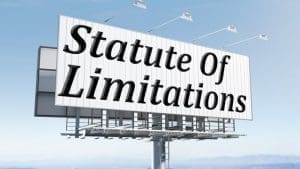Setting Profitable Hourly Rates Based on Market Analysis
Legal practitioners frequently ask, “How can attorneys set profitable hourly rates that reflect market conditions while ensuring sustainable practice growth?” The answer lies in conducting comprehensive market rate analysis that combines cost calculations, competitive intelligence, and value-based positioning to establish rates that support both profitability and client satisfaction.
Setting appropriate hourly rates represents one of the most critical business decisions attorneys make throughout their careers. Attorney hourly rate optimization requires balancing multiple factors including operational costs, market positioning, and client expectations while maintaining ethical obligations and professional standards.
The most successful legal practitioners understand that profitable billing rates emerge from systematic analysis rather than arbitrary pricing decisions. Attorneys who master market-based rate setting consistently achieve higher profit margins while maintaining competitive positioning within their practice areas and geographic markets.
How Does Geographic Location Impact Attorney Hourly Rates?
Regional pricing variations create significant disparities in attorney hourly rates across different markets. The District of Columbia leads the nation with average rates of $462 per hour, while West Virginia attorneys average $195 per hour, demonstrating the substantial impact of geographic factors on pricing strategies1.
Metropolitan areas consistently command higher rates than rural markets due to increased cost of living, higher client expectations, and greater competition for premium legal services. New York attorneys average $398 per hour, while California practitioners charge $391 per hour, reflecting the economic dynamics of major legal markets.
Local market conditions influence not only the rates attorneys can charge but also the types of clients they serve and the complexity of matters they handle. Urban markets typically support specialized practices that command premium rates, while rural practitioners often serve broader client bases with more varied legal needs.
Cost of living adjustments represent a fundamental component of geographic pricing strategies. Attorneys practicing in expensive metropolitan areas face higher overhead costs for office space, staff salaries, and professional services, necessitating higher hourly rates to maintain comparable profit margins.
The concentration of large corporations and high-net-worth individuals in certain geographic areas creates natural demand for premium legal services. These market dynamics enable attorneys in major financial centers to charge rates that would be unsustainable in smaller markets with different client demographics.
What Role Does Practice Area Specialization Play in Rate Setting?
Legal specialization pricing varies dramatically across different practice areas, with bankruptcy attorneys commanding the highest average rates at $439 per hour, followed by intellectual property practitioners at $414 per hour. These premium rates reflect the specialized knowledge and expertise required for complex legal matters.
Corporate law and immigration practice areas also command premium rates, averaging 7 and 4 per hour respectively, due to the high-stakes nature of business transactions and the specialized regulatory knowledge required for immigration matters.
Practice area profitability analysis reveals that certain legal disciplines consistently generate higher revenue per hour than others. Tax law, trusts and estates, and commercial litigation typically support higher billing rates due to their complexity and the significant financial consequences of legal outcomes.
Criminal defense and workers’ compensation practice areas generally command lower hourly rates, averaging $216 and $177 per hour respectively, reflecting different client demographics and market dynamics. These practice areas often serve individual clients with limited financial resources rather than corporate entities.
The specialization premium reflects the time and investment required to develop expertise in complex legal areas. Attorneys who invest in specialized education, certification, and experience can justify higher rates based on their unique qualifications and the value they provide to clients.
How Should Attorneys Calculate Their Minimum Profitable Rate?
Cost-based pricing calculations provide the foundation for establishing minimum hourly rates that ensure practice sustainability. Attorneys must first calculate their total annual operating costs, including salary expectations, overhead expenses, and desired profit margins.
The calculation begins with determining annual revenue requirements by adding desired salary, business expenses, and profit margin targets. For example, an attorney seeking $100,000 in salary with $30,000 in expenses and a 40% profit margin would need to generate $182,000 in annual revenue.
Billable hour calculations require realistic assessments of actual productive time available for client work. Most attorneys spend only 55-61% of their office time on billable activities, significantly reducing the hours available for revenue generation.
Working days must be adjusted for holidays, vacation time, and sick leave. A typical year provides approximately 1,880 office hours after accounting for time off, but only 60% of this time typically generates billable revenue.
The break-even hourly rate emerges by dividing total revenue requirements by realistic billable hours. This calculation provides the minimum rate necessary to cover costs and achieve profit objectives, serving as the baseline for market-competitive pricing decisions.
What Competitive Intelligence Methods Work Best for Rate Analysis?
Market research strategies for attorney rate setting require systematic data collection from multiple sources to understand competitive positioning within specific practice areas and geographic markets. State bar associations often publish economic surveys that provide valuable benchmarking data.
Direct competitor analysis involves researching other attorneys’ published rates, marketing materials, and client testimonials to understand market positioning strategies. This research should focus on attorneys with similar experience levels, practice areas, and client demographics.
Competitive benchmarking extends beyond simple rate comparisons to include service offerings, client communication practices, and value propositions that justify premium pricing. Understanding how competitors position their services helps identify opportunities for differentiation.
Professional networking events, bar association meetings, and continuing education programs provide informal opportunities to gather market intelligence about prevailing rates and client expectations. These conversations offer insights that published data cannot capture.
Online legal directories and professional platforms increasingly provide rate information that can supplement formal market research. However, this data should be verified through multiple sources to ensure accuracy and relevance.
How Do Experience Levels Affect Hourly Rate Justification?
Experience-based pricing reflects the premium clients place on proven track records and specialized knowledge developed over years of practice. Senior attorneys with established reputations can command rates significantly higher than market averages based on their demonstrated results.
New attorneys typically start with rates below market averages while building experience and client relationships. However, attorneys with specialized education or previous professional experience may justify higher starting rates based on their unique qualifications.
Professional reputation factors include bar association leadership, published articles, speaking engagements, and recognition by peer organizations. These credentials support premium pricing by demonstrating expertise and professional standing within the legal community.
Client testimonials and case results provide powerful justification for higher rates when they demonstrate superior outcomes or exceptional service quality. Attorneys who consistently achieve favorable results can leverage this track record in rate discussions.
The relationship between experience and rates is not always linear. Attorneys who develop specialized expertise or serve unique market niches may command premium rates earlier in their careers than generalists with longer practice histories.
What Alternative Fee Structures Complement Hourly Billing?
Blended rate models offer clients predictable hourly costs while allowing firms to assign work to the most appropriate attorney regardless of individual billing rates. This approach averages rates across team members to provide cost certainty4.
Subscription-based legal services create recurring revenue streams while providing clients with predictable monthly legal expenses. This model works particularly well for business clients who require ongoing legal support for routine matters4.
Value-based pricing strategies focus on outcomes achieved rather than time invested, allowing attorneys to capture more value when they deliver exceptional results efficiently. This approach requires careful case evaluation and clear outcome definitions.
Contingency fee arrangements align attorney and client interests while providing access to legal services for clients who cannot afford hourly rates. These arrangements require careful risk assessment and case selection to ensure profitability.
Hybrid billing models combine elements of different fee structures to balance client needs with firm profitability objectives. These arrangements might include fixed fees for routine services with hourly billing for unexpected complications.
How Should Attorneys Communicate Rate Increases to Existing Clients?
Client communication strategies for rate increases require careful timing, clear justification, and advance notice to maintain positive relationships while implementing necessary pricing adjustments. Regular, modest increases are generally better tolerated than infrequent large adjustments.
Annual rate reviews should be standard practice, with increases typically matching inflation rates of 2-5% per year. This systematic approach helps clients anticipate and budget for rate adjustments while ensuring attorney compensation keeps pace with economic conditions.
Rate increase justification should focus on value delivered, market conditions, and increased costs rather than simply announcing higher rates. Clients respond better when they understand the business rationale behind pricing decisions.
Advance notice of 30-60 days allows clients to budget for increased costs and demonstrates respect for their financial planning needs. This courtesy often determines whether clients accept rate increases or seek alternative representation.
Written communication documenting rate changes protects both attorney and client interests while ensuring clear understanding of new billing arrangements. These communications should be professional, concise, and focused on continued value delivery.
What Technology Tools Support Market-Based Rate Analysis?
Legal practice management software provides detailed reporting capabilities that help attorneys analyze their billing patterns, profitability by practice area, and time allocation across different activities. This data supports informed rate-setting decisions based on actual practice metrics.
Time tracking applications with automated features help attorneys capture billable time more accurately, providing better data for rate analysis and profitability calculations. These tools often reveal previously unbilled time that can improve revenue without rate increases.
Financial reporting systems integrated with practice management software enable attorneys to track key performance indicators including realization rates, collection percentages, and profit margins by client or practice area.
Market research platforms and legal industry publications provide access to current rate surveys and economic data that support competitive analysis. These resources help attorneys benchmark their rates against relevant market segments.
Client relationship management systems help track client satisfaction, retention rates, and payment patterns that inform rate-setting strategies. Understanding client responses to pricing helps optimize rate structures for long-term profitability.
How Do Economic Conditions Influence Rate Setting Strategies?
Economic cycle considerations significantly impact attorney rate-setting strategies, with different approaches required during periods of economic growth versus recession. During economic expansion, clients may be more accepting of rate increases, while downturns require more conservative pricing approaches.
Inflation rates directly affect attorney costs and should be reflected in annual rate adjustments to maintain real income levels. The recent period of elevated inflation has led to more substantial rate increases across the legal industry7.
Market demand fluctuations influence both the rates attorneys can charge and the volume of work available. Practice areas that serve recession-resistant industries may maintain pricing power during economic downturns while others may need to adjust rates or offer alternative fee arrangements.
Client budget constraints during economic uncertainty may require attorneys to offer more flexible payment terms or alternative fee structures while maintaining overall profitability. Understanding client financial pressures helps attorneys adapt their pricing strategies appropriately.
Interest rate environments affect client decision-making about legal expenditures, particularly for business clients considering major transactions or litigation. Attorneys should consider these broader economic factors when setting rates and structuring fee arrangements.
What Ethical Considerations Apply to Attorney Rate Setting?
Professional responsibility requirements govern how attorneys set and communicate their fees, requiring that rates be reasonable and clearly communicated to clients. State bar rules provide guidance on fee reasonableness factors including time, labor, novelty, and results obtained.
Fee agreements must be clear, written, and understood by clients before representation begins. Attorneys cannot change fee arrangements without client consent, making initial rate setting decisions particularly important for long-term client relationships.
Reasonableness standards consider factors including the attorney’s experience, the complexity of the matter, the time required, and the results achieved. Rates that are significantly above market levels may face scrutiny unless justified by exceptional circumstances.
Client communication about fees must be honest and transparent, avoiding any misrepresentation about costs or billing practices. Attorneys have fiduciary duties to act in their clients’ best interests, which includes fair and reasonable fee arrangements.
Contingency fee arrangements are subject to specific ethical rules including maximum percentage limits and required disclosures. Attorneys must ensure that these arrangements comply with applicable professional responsibility requirements.
How Can Solo Practitioners Compete with Large Firm Rates?
Solo practice advantages include lower overhead costs, more flexible service delivery, and personal attention that can justify competitive rates despite lacking large firm resources. Solo practitioners can often provide more cost-effective services for routine matters.
Specialization strategies enable solo practitioners to command premium rates by developing expertise in niche practice areas where they can compete effectively with larger firms. Focused practices often achieve higher profitability than generalist approaches.
Technology leverage allows solo practitioners to deliver sophisticated services efficiently, reducing the time required for routine tasks and enabling competitive pricing. Cloud-based practice management systems provide enterprise-level capabilities at affordable costs.
Strategic partnerships with other solo practitioners or small firms can provide access to resources and expertise that support premium pricing. These collaborations enable solo practitioners to handle complex matters that might otherwise require large firm resources.
Client relationship advantages of solo practice include direct attorney access, personalized service, and flexible fee arrangements that larger firms may not offer. These benefits can justify competitive rates and support client retention.
What Metrics Should Attorneys Track for Rate Optimization?
Key performance indicators for rate optimization include realization rates, collection percentages, profit margins by practice area, and client retention rates. These metrics provide insights into the effectiveness of current pricing strategies and opportunities for improvement.
Revenue per attorney calculations help firms understand productivity levels and identify opportunities for rate adjustments or efficiency improvements. This metric should account for both billable and non-billable activities to provide accurate assessments.
Client profitability analysis reveals which clients and matters generate the best returns on investment, informing decisions about rate structures and client relationship management. Some clients may justify lower rates due to volume or strategic value.
Time allocation studies help attorneys understand how they spend their time and identify opportunities to increase billable hour percentages or improve efficiency. This analysis supports both rate setting and practice management decisions.
Market share analysis within specific practice areas or geographic markets helps attorneys understand their competitive position and pricing power. This information guides strategic decisions about rate positioning and business development efforts.
Setting profitable hourly rates based on market analysis requires a systematic approach that balances cost recovery, competitive positioning, and value delivery to clients. The most successful attorneys understand that rate setting is an ongoing process that must adapt to changing market conditions, economic factors, and practice development.
Strategic rate management involves regular market research, systematic cost analysis, and disciplined implementation of pricing decisions that support long-term practice sustainability. Attorneys who master these elements consistently achieve superior financial performance while maintaining strong client relationships.
The principles underlying effective rate setting reflect broader conservative values of fiscal responsibility, market-based pricing, and value creation for clients. When attorneys embrace these principles and implement systematic rate-setting processes, they build sustainable practices that serve both their professional objectives and their clients’ needs.
Market-driven pricing strategies enable attorneys to compete effectively while maintaining profitability and professional standards. The legal profession benefits when attorneys price their services appropriately, ensuring that quality legal representation remains accessible while supporting the economic viability of legal practice.
The future of legal practice belongs to attorneys who combine traditional professional values with sophisticated business management techniques. By setting rates based on thorough market analysis and sound business principles, attorneys can achieve their financial objectives while maintaining the highest standards of client service and professional integrity.
- Average Attorney Fees by State Rankings
- Solo and Small Firm Lawyer Hourly Rates Overview
- How Much Should Lawyers Charge: Comprehensive Guide
- Law Firm Pricing Guide: Strategies and Best Practices
- Tips for Increasing Your Legal Fees Effectively
- Seven Tactful Strategies for Justifying Rate Increases
- Analysis of Am Law 100 Hourly Rates by Brightflag
- Pricing Legal Services: Financing a Law Firm
- Lawyer Hourly Rate by State Breakdown
- Eight Strategies to Optimize Billable Rates in Law Firms
- Attorney Average Hourly Rate Insights
- What Is the Hourly Rate for a U.S. Lawyer?
- How Should I Set My Hourly Rate as a Lawyer?
- How Much Does a Lawyer Cost per Hour?
- Attorney Hourly Rates: Data and Trends
- Semantic Scholar Research on Legal Billing Practices
- Semantic Scholar Study of Attorney Rate Structures
- Semantic Scholar Analysis of Lawyer Billing Models
- Semantic Scholar Insights on Legal Service Pricing
- Semantic Scholar Exploration of Attorney Fees
- Semantic Scholar Research on Billing Efficiency
- Semantic Scholar Study on Legal Rate Optimization
- Matter-Level Profit Strategies for Agile Attorneys
- Legal Compensation Strategies from Market Analysis
- What Is the American Rule of Legal Fees?
- Semantic Scholar Paper on Billing Fairness
- Semantic Scholar Research on Legal Pay Structures
- Semantic Scholar Study of Fee Setting Models
- Average Lawyer Hourly Rate Data Analysis
- Impact of Market Analysis on Fee Setting
- Book Chapter on Competitive Fee Strategies
- Technology Engineering Studies Journal Article
- Analyzing Law Firm Profit per Hour
- Maintaining Profitable Practice Beyond Hourly Billing
- Lawyer Hourly Rate Trends and Management
- Setting Rates and Fees Workbook PDF
- Baylor University Legal Fee Survey PDF
- Environmental Research on Economic Impacts of Billing
- UNLV Graduate Research Journal Article
- ACP Publications on Atmospheric Chemistry and Pricing
- BLS Occupational Employment Statistics: Lawyers May 2023
- NAPABA CLE Programs Call for Proposals PDF


















